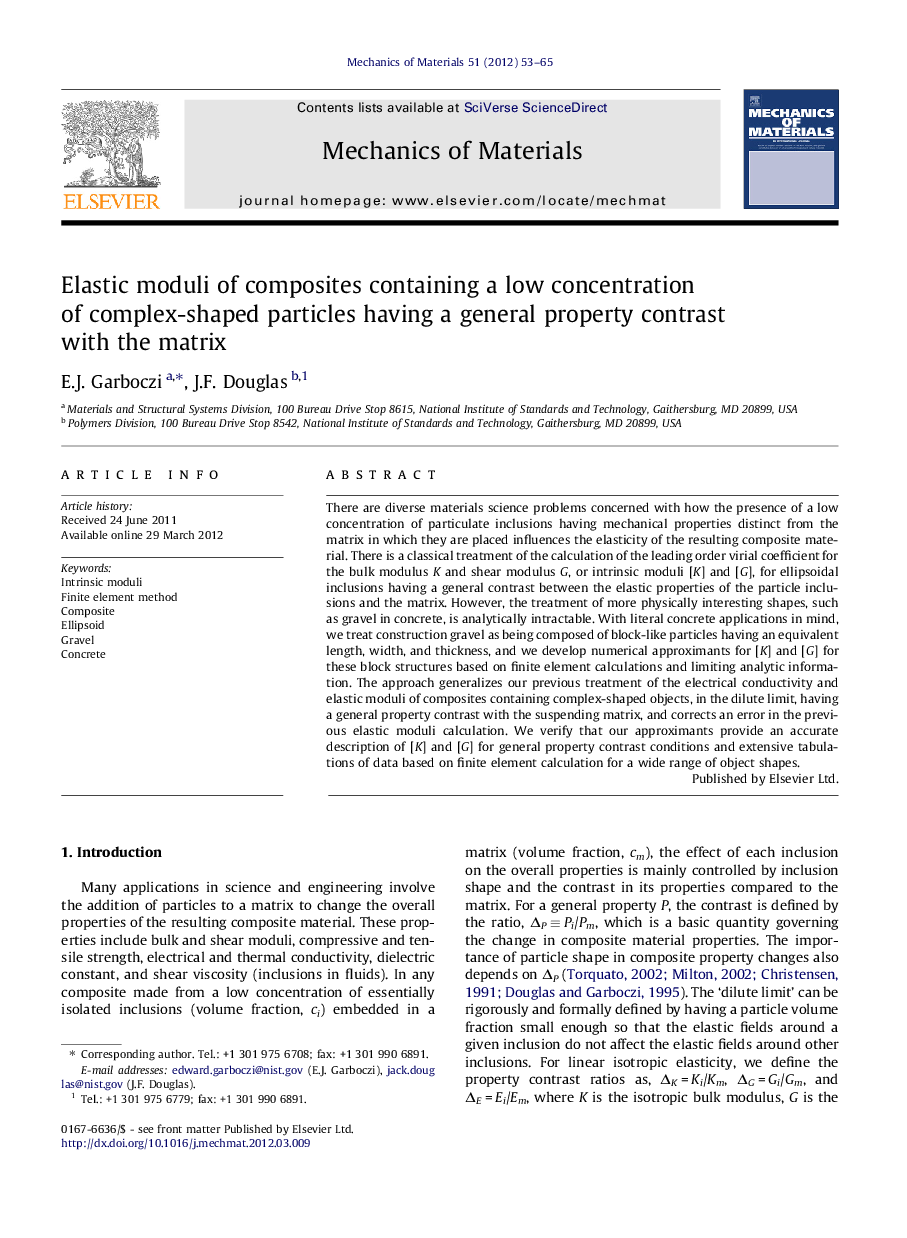| Article ID | Journal | Published Year | Pages | File Type |
|---|---|---|---|---|
| 802885 | Mechanics of Materials | 2012 | 13 Pages |
There are diverse materials science problems concerned with how the presence of a low concentration of particulate inclusions having mechanical properties distinct from the matrix in which they are placed influences the elasticity of the resulting composite material. There is a classical treatment of the calculation of the leading order virial coefficient for the bulk modulus K and shear modulus G, or intrinsic moduli [K] and [G], for ellipsoidal inclusions having a general contrast between the elastic properties of the particle inclusions and the matrix. However, the treatment of more physically interesting shapes, such as gravel in concrete, is analytically intractable. With literal concrete applications in mind, we treat construction gravel as being composed of block-like particles having an equivalent length, width, and thickness, and we develop numerical approximants for [K] and [G] for these block structures based on finite element calculations and limiting analytic information. The approach generalizes our previous treatment of the electrical conductivity and elastic moduli of composites containing complex-shaped objects, in the dilute limit, having a general property contrast with the suspending matrix, and corrects an error in the previous elastic moduli calculation. We verify that our approximants provide an accurate description of [K] and [G] for general property contrast conditions and extensive tabulations of data based on finite element calculation for a wide range of object shapes.
► Dilute limit of inclusions in a matrix influences the elastic moduli of the composite. ► Random gravel particles treated as blocks having an equivalent length, width, thickness. ► Intrinsic moduli approximants based on finite element calculations and analytic information. ► Accurate description for general property contrast and a range of block shapes and real gravel particles. ► Extensive tabulations of data based on finite element calculation for a wide range of object shapes.
